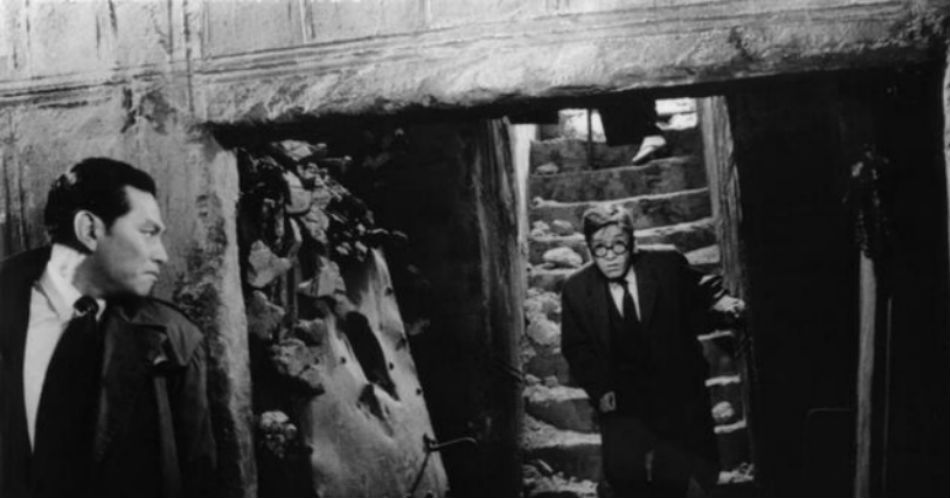[JAPAN]
Mercury Cinema, Fri 25 Sep
All the way from 1960, Akira Kurusawa’s classic black-and-white film is a strong piece of social, cultural and corporate criticism. I found myself comparing it to Orwell’s 1984, though the strong passion and melodrama being suppressed in 1984 are featured in The Bad Sleep Well. Akira pays incredible attention to detail, the scenes, the props, every nuance of action is played out and the body language and movement is as carefully scripted as is the dialogue.
There are plenty of scenes in this movie in which the subtitles are not necessary – there is no doubt what is being said and being felt by the various players. Emotional turmoil features from start to finish. Akira’s interest is in the characters, to help his audience understand why they are doing (the bizarre things that they are doing) and why they are doing them, how they can be torn apart and how suicide becomes an honourable way out to save face for your boss.
As for action – this is so very un-Hollywood. Rarely are action scenes part of the drama, more usually we see the results, such as the mangled car after a car crash etc. There are a few well-crafted patches of humour through this film, mostly dark, sometimes ironic. This translates across the cultures well.
Kurusawa is one of the most highly regarded of Japanese directors, winning awards in Japan, as well as internationally. More than five decades on, this is still a great piece of cinema and it was a privilege to see it on the big screen.
As well as Asian film history and classics, the OzAsia cinema experience also has plenty of brand new films and shorts that you may also choose to see.
Clayton Werner
[JAPAN] Mercury Cinema, Fri 25 Sep All the way from 1960, Akira Kurusawa’s classic black-and-white film is a strong piece of social, cultural and corporate criticism. I found myself comparing it to Orwell’s 1984, though the strong passion and melodrama being suppressed in 1984 are featured in The Bad Sleep Well. Akira pays incredible attention to detail, the scenes, the props, every nuance of action is played out and the body language and movement is as carefully scripted as is the dialogue. There are plenty of scenes in this movie in which the subtitles are not necessary – there is no doubt what is being said and being felt by the various players. Emotional turmoil features from start to finish. Akira’s interest is in the characters, to help his audience understand why they are doing (the bizarre things that they are doing) and why they are doing them, how they can be torn apart and how suicide becomes an honourable way out to save face for your boss. As for action – this is so very un-Hollywood. Rarely are action scenes part of the drama, more usually we see the results, such as the mangled car after a car crash etc. There are a few well-crafted patches of humour through this film, mostly dark, sometimes ironic. This translates across the cultures well. Kurusawa is one of the most highly regarded of Japanese directors, winning awards in Japan, as well as internationally. More than five decades on, this is still a great piece of cinema and it was a privilege to see it on the big screen. As well as Asian film history and classics, the OzAsia cinema experience also has plenty of brand new films and shorts that you may also choose to see. Clayton Werner
Kurosawa’s Film Noir: The Bad Sleep Well at Mercury Cinema – OzAsia Film Festival Review
Kurosawa’s Film Noir: The Bad Sleep Well at Mercury Cinema – OzAsia Film Festival Review
2015-09-30
Clayton Werner
Clayton Werner
User Rating: Be the first one !
80




